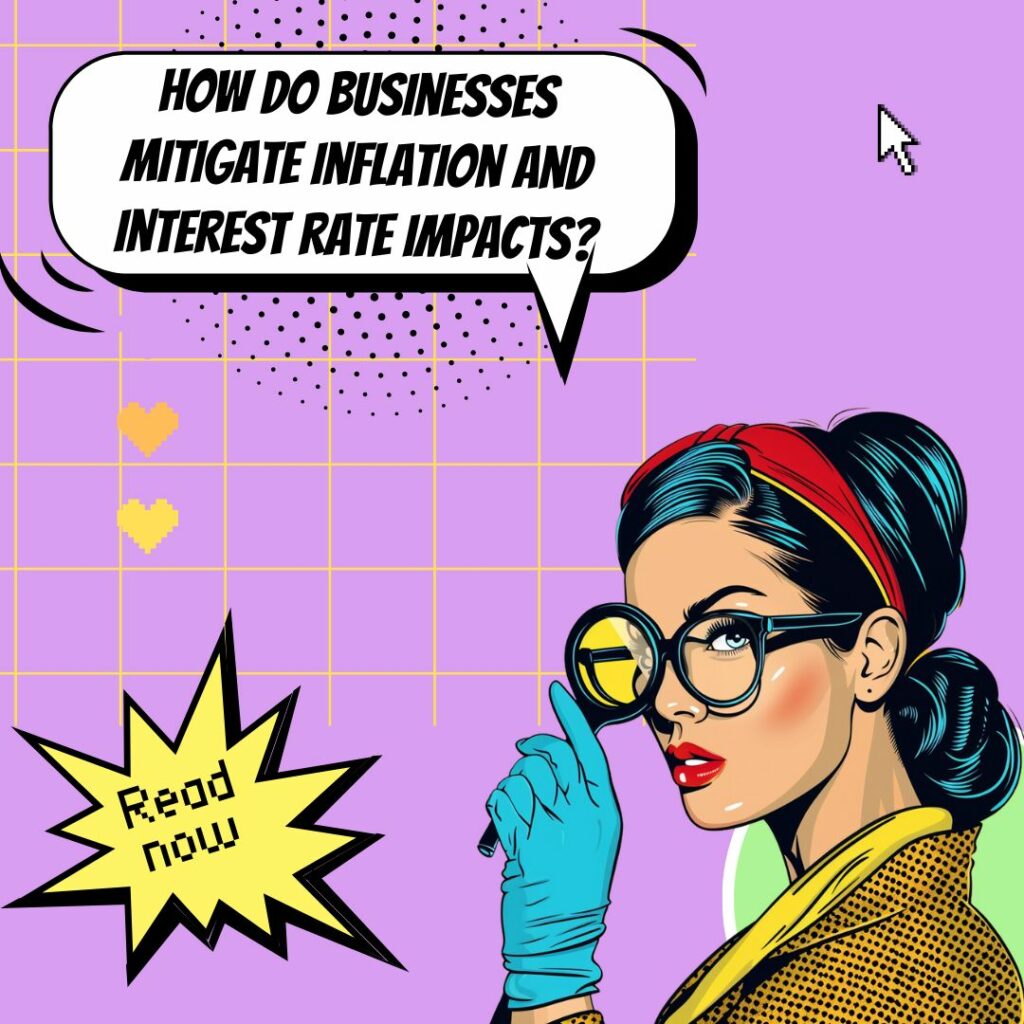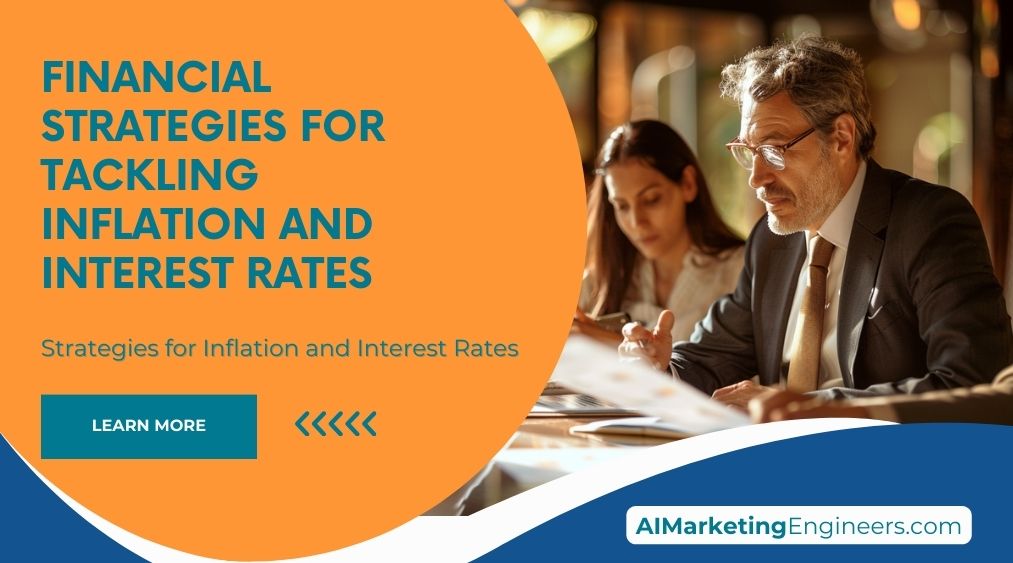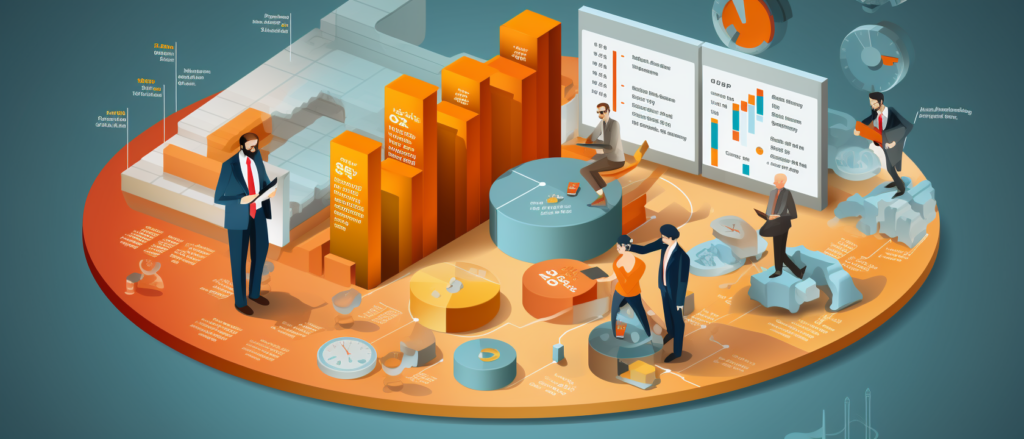Key Takeaways
✅ Diversify and Optimize Savings: In times of high interest rates, leaning towards financial products like certificates of deposit (CDs) and money market funds can be a game-changer for your savings strategy. The smart move? Construct a CD ladder to keep the savings wheel spinning, ensuring you always have access to high-return opportunities.
✅ Adjust Spending Habits and Investment Portfolios: The economic landscape is ever-changing, prompting a re-evaluation of spending habits and investment tactics. Shifting focus towards equities, consumer staples, and real estate funds could solidify your financial footing, making your portfolio inflation-resistant.
✅ Prepare for Rate Cuts and Inflation Easing: With the winds of economic change on the horizon, staying ahead means optimizing savings, curbing expenditures, and rebalancing investments. Anticipate lower interest rates and a cooling inflation to navigate through smoothly.
 Introduction
Introduction
Have you ever wondered how to keep your head above water in the swirling currents of inflation and interest rates? You're not alone. With economies worldwide grappling with fluctuating financial landscapes, it's become more crucial than ever to arm oneself with effective financial strategies. But where do you start?
This isn't about generic advice that barely scratches the surface. We're diving deep to unveil not just the challenges but also the modern trends and innovative solutions that could turn the tide in your favor. From maximizing your savings to making your investment portfolio as resilient as possible, this article promises actionable insights and groundbreaking information poised to revolutionize your approach to financial planning.
Feel the pulse of the latest in financial strategies, and prepare to uncover the kind of knowledge that could safeguard, if not enhance, your financial future. Stay tuned, as what you're about to read could very well redefine your financial strategies for tackling inflation and interest rates.
Top Statistics
| Statistic | Insight |
|---|---|
| Inflation Rate: The 12-month change in the CPI fell to 3.7% in August 2023. | Shows the recent slowdown in inflation, but still above the Federal Reserve's 2% target. A key indicator for adjusting financial strategies. |
| Interest Rate: The federal funds rate was 5% to 5.25% as of May 3, 2023. | Illustrates the Federal Reserve's approach to tackling inflation. Higher rates affect both the cost of borrowing and investment returns. |
| Global Financial Stability: A 1-in-20 chance of world output contracting by 1.3%. | Highlights the risks high inflation and interest rates pose to the global economy. A critical consideration for international financiers and investors. |
| Investor Expectations: Inflation decline without much more increases in interest rates. | Reflects market optimism. Helpful for individuals and businesses in planning long-term investments. |
| Monetary Policy: The Federal Reserve uses rates to manage inflation. | Understanding the Fed's strategy is crucial for personal and corporate financial planning, as it impacts both savings and spending. |
Understanding Inflation and Interest Rates
Understanding the impact of inflation and interest rates is crucial for maintaining, or even growing, your financial well-being in trying times. Imagine you've saved up some money. You're feeling good, right? But here comes inflation, sneaking up and making everything more expensive—suddenly, your money buys you less than before. Central banks try to keep inflation in check by tweaking interest rates, which influences everything from your savings account to your mortgage. When interest rates go up, borrowing money gets more expensive, but the money in your savings account could start to work a bit harder for you. However, the catch is that inflation can still nibble away at those extra earnings. Understanding these dynamics helps you make informed decisions to protect your finances.
Optimizing Savings and Investments
To optimize savings and investments, consider high-interest-rate savings products like certificates of deposit (CDs) and money market funds. Think of it as giving your money a better chance to grow, despite inflation. Adding a mix of stocks, especially from companies that tend to do well when prices go up (like those selling everyday necessities), can help too. Real estate could also be a smart move for the long haul, offering a potential hedge against inflation. Diversifying your investment portfolio can reduce risk and increase potential returns. Regularly reviewing and adjusting your investment strategy is crucial to stay ahead of inflation.
Managing Debt and Cash Flow
Managing debt and cash flow becomes more of a puzzle in these times. It's about keeping a close eye on what's going out and what's coming in. High inflation means your dollar doesn't stretch as far, making it a good time to double-check your spending. If you've got debt, especially with variable interest rates, it's time to buckle down and maybe even chat with your bank if you're struggling. The goal? Keep yourself in a position where you're controlling your debt, not the other way around. Creating a detailed budget can help you track expenses and find areas to save. Prioritizing debt repayment can reduce financial stress and improve your overall financial health.
Dealing with High Interest Rates for Businesses
For businesses, dealing with high interest rates is all about being proactive. Maybe you're looking for a loan; starting with your regular bank might open up some doors. Highlighting the good points, like a solid plan for repayment, can make all the difference. And always read the fine print—look out for terms like "prepayment penalties." Being flexible with how you finance your operations, such as considering leasing options, can also provide breathing room. Exploring alternative financing options can help manage costs. Maintaining strong relationships with lenders can lead to more favorable loan terms.
Long-Term Financial Planning
Long-term planning and risk management involve keeping a watchful eye on the horizon. How will inflation affect your retirement plans or insurance? Regularly revisiting your financial plan, diversifying your investments, and perhaps most importantly, seeking advice from finance pros can help you steer through the storm. Setting clear financial goals helps guide your investment decisions. Regularly reviewing your financial plan ensures it remains aligned with your goals and market conditions.
Adapting to Economic Changes
When inflation and interest rates start to climb, it's natural to feel a bit on edge about your financial future. The strategies listed above, from optimizing your investments to managing debt effectively, are about making informed decisions to protect and grow your wealth. Even as the economic landscape shifts, adapting your financial strategies can help you navigate to calmer waters. Staying informed about economic trends can help you anticipate changes. Flexibility and proactive planning are key to maintaining financial stability during uncertain times.
AI Marketing Engineers Recommendation
Recommendation 1: Diversify Investment Portfolios to Hedge Against Inflation: Diversification remains a pivotal strategy in weathering inflationary periods. By spreading investments across various asset classes (stocks, bonds, real estate, commodities), investors can reduce risk and potentially offset losses in one area with gains in another. The rationale here stems from historical data showing that commodities and real estate often perform well during high inflation, while bonds may not. For instance, during periods of pronounced inflation, such as the 1970s, commodities saw substantial price increases, which helped investors in these assets to protect, and at times, increase the value of their portfolios in real terms.
Recommendation 2: Leverage Fixed-Rate Borrowing Before Interest Rate Hikes: With central banks around the globe increasing interest rates to combat rising inflation, locking in fixed-rate loans now can result in significant savings over time. For example, securing a mortgage at a fixed rate before further rate hikes can keep monthly payments stable, despite fluctuating interest rates. This strategy is especially relevant now, as predicted further rate hikes by the Federal Reserve (as of 2023) indicate we are in an escalating rate environment. By securing a fixed rate, you essentially freeze your borrowing cost, protecting yourself against the cost escalations tied to higher interest rates.
Recommendation 3: Implement Cost Management Tools to Counteract Rising Operating Costs: As businesses grapple with increasing costs due to inflation, the use of advanced cost management software becomes invaluable. These tools not only help in tracking and managing expenses more efficiently but can also provide predictive analytics to forecast future spending trends. The relevance and benefits of this recommendation are underscored by recent shifts in technology adoption rates; for example, a 2022 survey by Gartner found that 60% of enterprise leaders see advanced analytics and business intelligence as their top investment priorities. Implementing such tools can help businesses optimize their spending, identify unnecessary outgoings, and reallocate resources more effectively to guard against the detrimental impacts of inflation.
Conclusion
In a world where inflation and interest rates constantly shape the economic landscape, our financial stability relies heavily on adopting smart strategies. This article outlines the importance of understanding the impact these factors have on our money and the proactive measures we can take. By optimizing savings and investments, managing debt and cash flow intelligently, and adapting business strategies to tackle high interest rates, we empower ourselves to navigate through economic uncertainties with confidence.
Reflecting on the key insights, it's clear that regular assessment and adjustment of our financial plans are not just optional; they are necessary for sustaining and growing our wealth over time. Diversifying investments, maintaining a vigilant eye on savings, and being prudent with borrowing are pivotal actions in safeguarding our financial health against the eroding effects of inflation and the challenges of rising interest rates.
Looking ahead, the significance of long-term planning and risk management in fortifying our financial future cannot be overstressed. With the right strategies, we can turn these economic challenges into opportunities for growth and stability. The journey to financial resilience is continuous and requires commitment, awareness, and the willingness to seek professional advice when needed. As we wrap up, let's remember that tackling inflation and interest rates effectively is within reach. By staying informed, making educated decisions, and adapting to the economic environment, we can not only survive but thrive. Let this article serve as a guide and a reminder that, in the face of financial challenges, strategy is everything.
FAQs
Question 1: What is the relationship between inflation and interest So, what's the scoop on inflation and interest rates?
Answer: Imagine a seesaw. When inflation goes up, interest rates usually do too. It's like a dance central banks engage in to keep the economy in balance.
Question 2: How does inflation nibble away at my money?
Answer: Think of your money as a chocolate bar. Over time, inflation makes bits of it disappear. Whether you're saving, loaning, or investing, it's like the bar gets smaller, affecting how much you can enjoy later.
Question 3: What's the game plan of central banks with their monetary policy moves?
Answer: These folks have two big goals: keeping prices stable and making sure as many people as possible have jobs. Using interest rates, they're like puppeteers, trying to control inflation and keep the economy humming along.
Question 4: How do jumps in interest rates mess with my investments?
Answer: When interest rates climb, bonds might look a bit less shiny, and stocks could feel the pinch because companies face higher borrowing costs. It's a bit like a shift in gravity affecting everything's weight.
Question 5: Are CDs a golden ticket in a world of high interest rates?
Answer: Absolutely! It's like locking in a good rental rate before prices go up. Using CD ladders is a clever trick to grab the highest rates while keeping some flexibility.
Question 6: Do money market funds party when interest rates soar?
Answer: They do enjoy the high rates, getting a boost in what they pay out. But if rates start to fall, they might need to wind down the celebration. It's all about timing.
Question 7: What's my battle plan against high interest rates and inflation's one-two punch?
Answer: Sharpening your savings strategy, examining CD options, tweaking daily spending, and maybe even big moves like downsizing can shield you. Don't forget to mix in some stocks to keep pace with inflation.
Question 8: How can business chiefs sail through stormy waters of high rates and inflation?
Answer: Start by chatting with your current bank for deals, keep your cash flow looking good, dodge prepayment traps, and think outside the box for financing. Know your numbers, trim fat, and maybe up your prices.
Question 9: What's the magic formula for budgeting when prices keep jumping?
Answer: Lay out all the cash coming in and going out, dig into your bank statements, and adjust the sails as needed. Remember, debt repayment can eat into your plans, so keep an eye on cutting back where you can.
Academic References
- Tillmann, P. (2009a). The macroeconomic effects of higher interest rates driven by cost-push inflation. Journal of Macroeconomics, 31(3), 392-409. This study unveils how higher interest rates can escalate inflation through increased costs of working capital for firms, affecting the overall price level even in scenarios where firms do not directly borrow from banks.
- Ravenna, F., & Walsh, C.E. (2006). Optimal monetary policy with the cost-push channel. Journal of Monetary Economics, 53(2), 199-216. Ravenna and Walsh introduce the cost-push channel into new Keynesian models to demonstrate the nuanced interplay between monetary policy actions and inflationary pressures.
- Chowdhury, I., Hoffmann, M., & Schabert, A. (2006). Inflation dynamics and the cost-push channel in Europe. European Economic Review, 50(3), 995-1016. This paper compares the impacts of the cost-push channel on inflation across different countries, revealing that the strength of this channel relative to the demand channel can lead to varied inflation responses.
- Dedola, L., & Lippi, F. (2005). The monetary transmission mechanism: Evidence from the industries of five OECD countries. European Economic Review, 49(6), 1543-1569. Dedola and Lippi explore how monetary policy decisions impact inflation through both cost-push and demand channels, underscoring the complexity of these interactions.
- Adolfson, M., Laséen, S., Lindé, J., & Villani, M. (2005). Are constant interest rate forecasts modest interventions? Evidence from an estimated open economy model of the Euro area. Review of Economic Dynamics, 8(3), 509-533. This research highlights how the cost-push channel can significantly impact economies like the eurozone, suggesting the evaluation of sector-specific effects in monetary policy formulation.
- Rabanal, P. (2007). Does inflation increase after a monetary tightening? Answers based on an estimated DSGE model. Journal of Economic Dynamics and Control, 31(3), 906-937. Rabanal's work examines the predominance of the demand channel in certain economies, such as the US, guiding policymakers on which transmission mechanism to focus on.
- Leiser, D., & Drori, S. (2005). Naive understanding of inflation. Journal of Economic Psychology, 26(6), 931-952. This article investigates how a basic or naive understanding of inflation affects investor decisions, emphasizing the importance of effective communication and education on inflation risks.
- Memmel, C. (2011). How do banks adjust their capital ratios? Evidence from Germany. Journal of Financial Intermediation, 20(4), 509-528. Memmel explores the significance of banks' exposure to interest rate risk and their strategies of earnings from term transformations, noting its impact on bank dynamics and profitability.
- Olugbode, M., El-Masry, A., & Pointon, J. (2014). The exposure of the shipping industry to currency and interest rate risks. Journal of Transport Economics and Policy, 48(2), 337-353. Focusing on the shipping industry, the authors ascertain how exchange rate and interest rate exposures vary across industries, reinforcing the need for industry-specific inflation and interest rate risk management.










